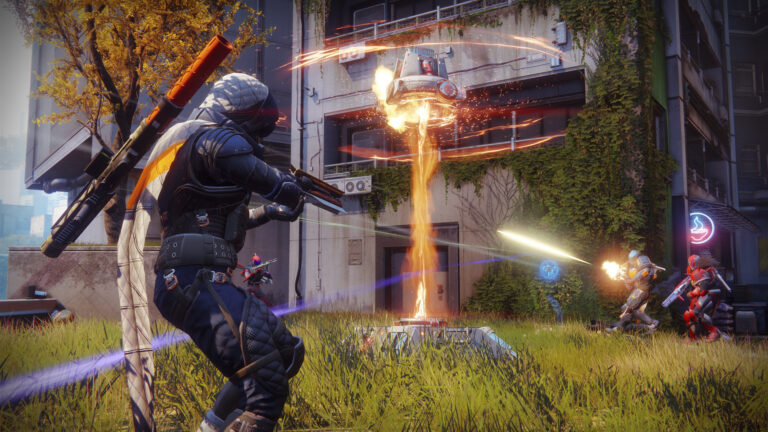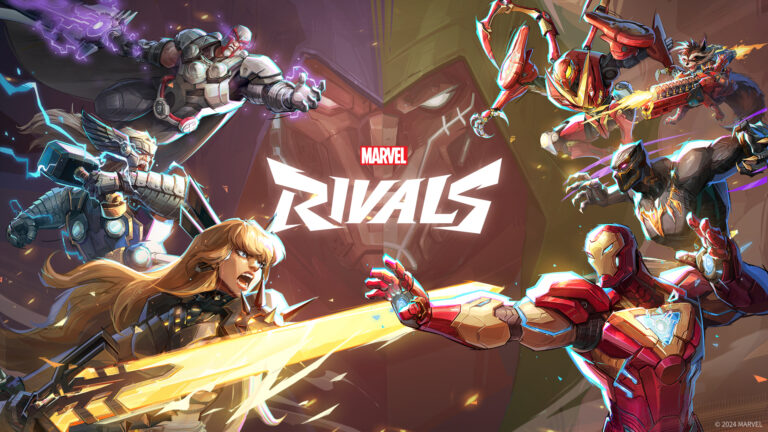The year 2025 has ushered in a new wave of excitement in the hero-shooter genre, and at the center of this momentum stands Marvel Rivals.
As a dynamic, fast-paced team-based shooter built around iconic Marvel heroes and villains, the game has quickly become a global sensation.
It blends competitive esports potential, cinematic combat, and strategic team synergy, offering an experience that both casual fans and high-level competitors gravitate toward.
With its innovative gameplay design and strong community engagement, Marvel Rivals is redefining what hero shooters can deliver.
A Marvel Universe Brought to Life Through Tactical Team Play
At its core, Marvel Rivals celebrates the diversity and complexity of the Marvel Universe. From Earth’s Mightiest Heroes to cosmic powerhouses, each character offers a distinct combat identity, movement style, and role within team compositions.
Unlike many hero shooters that rely on simplified ability sets, Marvel Rivals emphasizes depth and synergy—rewarding players who master timing, positioning, and role-based strategy.
The game’s dynamic environments, destructible structures, and physics-driven abilities create a battlefield where no two matches feel alike. Teams must adapt to environmental changes mid-match, counter hero picks, and coordinate ultimate abilities to secure objectives. This level of constant evolution is exactly what has captured the attention of players worldwide.
Innovation in Hero Shooter Design
One of the standout features of Marvel Rivals is its focus on cooperative power combinations. Heroes aren’t just isolated fighters—they connect and amplify each other in ways that encourage creative team setups. For instance:
- Tank heroes can shield and reposition allies during large-scale clashes.
- Damage heroes unleash devastating combos when timed with support buffs.
- Support heroes can shape the momentum of a fight by enhancing mobility, healing, or disrupting enemy lines.
This interconnected design demands a stronger strategic mindset than traditional shooters. It’s not enough to master one hero; players must understand how their abilities influence team fights, objective pressure, and counterplay.
Additionally, the game’s frequent updates and rotating narrative-driven seasons keep the meta fresh. New heroes bring revised strategies, forcing teams to continually optimize their synergy and adapt to shifting playstyles.
Global Competitive Appeal and Esports Growth
By mid-2025, Marvel Rivals had already built a thriving competitive scene. Tournaments attract teams from North America, Europe, Asia, and emerging esports regions in Latin America and Africa.
The game’s emphasis on teamwork and spectacle makes it a natural fit for broadcast events, where dramatic ultimates and high-skill plays captivate audiences.
Esports organizations praise the game for:
- Balanced hero designs
- Regular patches that keep gameplay fair
- Viewer-friendly mechanics that make matches easy to follow
- Strong developer support and community involvement
This has turned Marvel Rivals into a hub of competitive opportunity. Players who aim for high ranks often invest hours into refining mechanics, tracking hero matchups, and mastering team coordination.
Why Optimization Has Become Essential for Players
In the evolving world of competitive shooters, performance optimization is now as crucial as mechanical skill. Marvel Rivals is no exception. The game’s fast pace means players must react with precision, maintain perfect crosshair alignment, and sustain high battlefield awareness to stay alive during chaotic skirmishes.
Modern players analyze aiming patterns, ability timing windows, movement efficiency, and even reaction-testing exercises to stay at the top of their game. This analytical approach has influenced online discussions, guides, and YouTube breakdowns that dissect everything from hero rotational paths to optimal team compositions.
As competitive hero shooters evolve, players constantly search for performance-enhancing strategies to keep up with intense team-based combat. For some communities, this includes analyzing third-party tools that reveal how players optimize reaction time and precision.
One of the widely referenced platforms is Lavicheats’ Marvel Rivals hacks for enhanced targeting and battlefield awareness, which demonstrates how modern gamers study every possible method of gaining tactical insight in fast-paced Marvel-themed battles. While these tools are commonly discussed in performance analysis circles, players should always respect game policies and prioritize fair, ethical gameplay.
A Community Fueled by Creativity, Strategy, and Identity
Marvel fans and shooter enthusiasts alike have formed a vibrant community around the game. Artists bring characters to life through fan art, theorycrafters dissect potential hero abilities, and streamers showcase high-level gameplay that blends entertainment with tactical education.
Players identify with specific heroes and enjoy exploring their limitless potential. This emotional attachment, unique to Marvel’s deeply rooted storytelling, adds an extra layer of investment.
Mastering a beloved character’s combat style feels both rewarding and personal, contributing to the game’s widespread appeal.
Community-driven game modes, hero challenges, and squad-building experiments also keep player engagement high.
Whether teaming up as the Guardians of the Galaxy or forming a rogue team of villains, every session feels like a new chapter in a larger Marvel narrative.
The Future of Team-Based Hero Shooters Starts Here
With its innovative mechanics, explosive character interactions, and continuously growing competitive scene, Marvel Rivals is paving the way for a new era in team-based hero shooters.
The game doesn’t just follow the genre’s established formula—it redefines it by focusing heavily on synergy between heroes, allowing abilities to overlap, chain together, and reshape the flow of battle in ways no other shooter has attempted.
Its maps and environments are crafted with verticality, destructible structures, and interactive elements that transform every match into a living battleground. This level of detail enhances strategic depth and rewards players who take time to master positioning, rotations, and environmental awareness.
On the competitive side, developers are committed to balancing heroes, supporting esports integration, and providing tools that make the game both competitive and exciting to watch. Meanwhile, the community plays an essential role in shaping the game’s evolution—feedback loops, seasonal updates, and constant hero releases ensure the meta remains fresh and dynamic.
Even more uniquely, Marvel Rivals brings narrative-driven storytelling into PvP gameplay, allowing familiar Marvel lore, alliances, rivalries, and arcs to influence each season’s structure and hero interactions.
To Sum Up
In the world of team-based shooters, Marvel Rivals stands out as a powerhouse that is redefining the genre from the ground up. Its combination of iconic Marvel characters, responsive, fast-paced tactical combat, and layered strategic depth sets it apart from both traditional shooters and other hero-based titles. Every match feels like a cinematic clash of powers, while the game’s evolving mechanics ensure that mastery is always rewarded.
For casual players, it offers an accessible and thrilling introduction to squad-based combat; for competitive players, it provides an intricate ecosystem of synergy, counterplay, and high-skill potential. Ultimately, Marvel Rivals is more than just another hero shooter—it is the future blueprint for Marvel-inspired multiplayer gaming and one of the most influential titles shaping the landscape of 2025.










